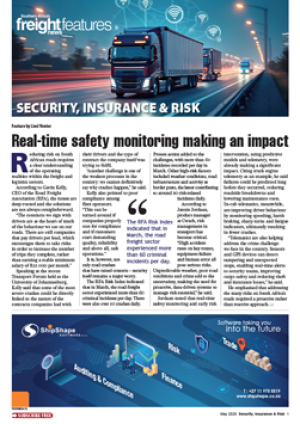Safto releases stats for first four months TWO-WAY trade for the first four months of this year grew by almost 15% against the same period last year, according to the latest cumulative figures from the SA Foreign Trade Organisation (Safto).
Released to FTW hot off the press by Safto g.m. Ann Moore, the new figures show a rise in imports of 15,05% to a total of R39,55-billion; with exports up by 14,94% to R42,32-bn.
In the regional analysis, the big performer in the increase in imports was Asia, with a 24,68% rise to a 1997 four-monthly total of R12,07-bn. Although Oceania (+62%) and Africa (+23%) also performed well on a percentage points basis, their respective totals for the four months (R1,1-bn and R1,5-bn) were small in cash terms. Africa (although an increasingly important player) constitutes only 10% of SA's overall trade, and Oceania only 1,5%. Asia, with 25% of total trade, has as its bigger sister Europe, which records a 39% share of two-way SA trade.
In exports, the biggest jump was a 36,07% rise in that mysterious product category Unclassified (mostly gold and platinum) - which totalled 11,8-bn for the period. Europe - the regional big performer - showed an off-take of R11,9-bn for the period, but this was a disappointing drop of 4,05% on the same four months last year. Asia (+26.06% to R8,8-bn) was next most important, while Africa (+20,48% to R5,8-bn) also showed muscle in the export side of things. Talking about the global spread of SA trade, Moore told FTW that the major geographical thrust of SA's imports and exports still shows a heavy orientation to Europe.
However, she said over the past four years - and this has been a continuation of a longer-term trend - there has been a significant shift towards a higher proportion of trade with Africa and Asia. This accompanied by a reduction in the percentage of trade conducted with Europe and the Americas. There is no surprise in the relatively higher growth in trade with Asia, according to Moore, even allowing for the inclusion in 1995 of SA's oil imports - which are sourced mainly from the Middle East.
Asia's total trade is growing more rapidly than that of any other region, she said, and Asian companies are renowned for their fast pace off the mark when new opportunities present themselves. Which undoubtedly they did in the SA market when sanctions fell away. However, Moore stressed, the growth is not only due to the lifting of sanctions.
Ironically - on the export side - new Asian markets were deliberately developed by SA companies from the mid-80s, she said, in response to the selective trade sanctions imposed by the US, Japan and a few other (western) countries.
In this way, some impetus was given to a trend which would have been inevitable over the long term.
